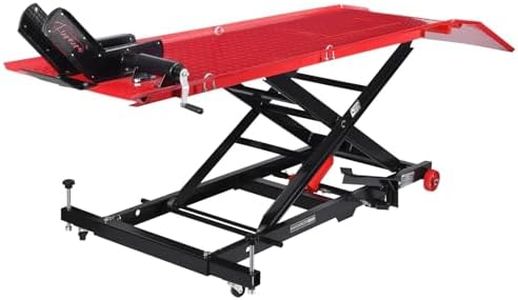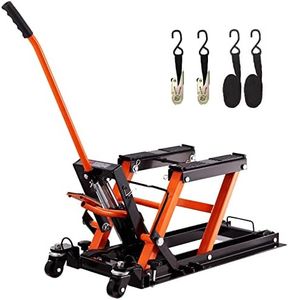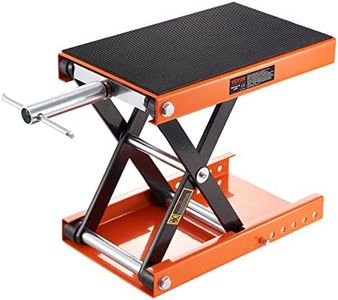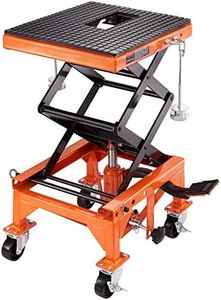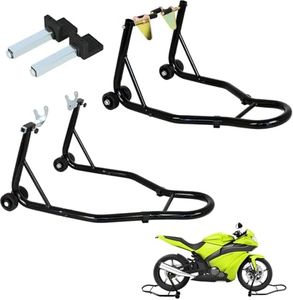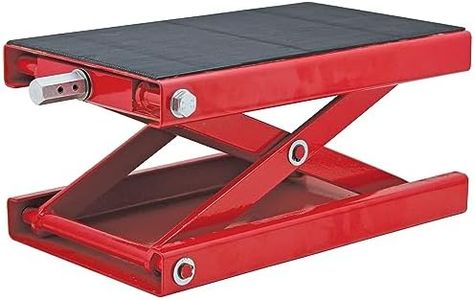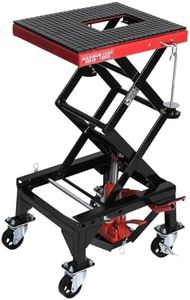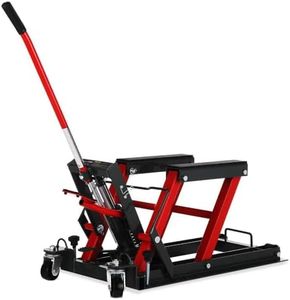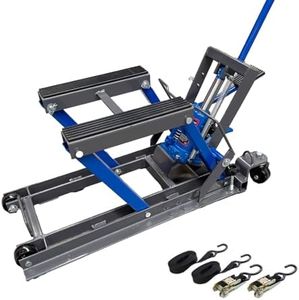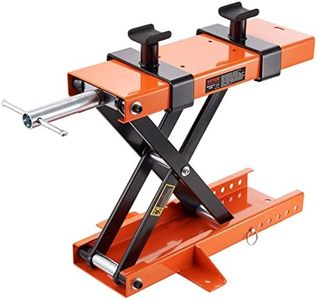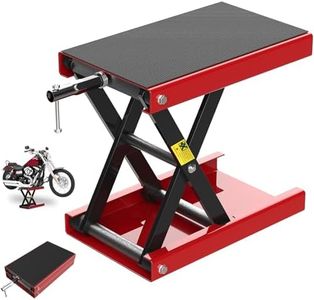We Use CookiesWe use cookies to enhance the security, performance,
functionality and for analytical and promotional activities. By continuing to browse this site you
are agreeing to our privacy policy
10 Best Motorcycle Lifts
From leading brands and best sellers available on the web.Buying Guide for the Best Motorcycle Lifts
Choosing a motorcycle lift can make working on your bike much easier, safer, and more comfortable. The right lift allows you to raise your motorcycle to a convenient height for maintenance, cleaning, or repair tasks. Before buying, think about your bike’s size and weight, where you plan to use the lift, and how you’ll store it. Picking the right lift depends on matching its features to your usual maintenance needs and your workspace.Lifting CapacityLifting capacity refers to the maximum weight the lift can safely raise and hold. This is important because using a lift that's not rated for your bike’s weight can be dangerous and cause equipment failure or injury. Lifting capacities typically range from 500 to 1,500 pounds or more. For smaller bikes, scooters, or dirt bikes, a lower capacity is often sufficient, while larger touring or cruiser motorcycles need a lift with a higher weight rating. Always check your motorcycle’s weight and pick a lift with capacity well above it to ensure safety.
Lift Type (Platform vs. Jack/Stand)Motorcycle lifts come mainly as full platforms or smaller jack/stand styles. Platform lifts raise the entire bike on a broad table, allowing you to stand or sit comfortably while working around the whole bike. Jack or stand lifts raise the frame or a specific part off the ground, which is helpful for tasks like wheel changes but may offer less stability. Consider whether you need full access to your bike or just want to lift it for occasional tire or chain maintenance. Full platforms suit frequent mechanics, while jacks or stands are handy for quick, occasional jobs.
Lift Range (Minimum/Maximum Height)Lift range describes how low and how high the lift can raise your motorcycle. The minimum height should be low enough to fit comfortably under your bike, even if it has low ground clearance. The maximum lift height determines how easy it will be to work on different parts of the motorcycle without bending or kneeling. If you plan a lot of under-bike maintenance, look for a lift with a higher maximum height; if space is limited, you may prefer a more modest range.
Lift Mechanism (Hydraulic, Pneumatic, Manual Screw)The lift mechanism is how the platform or jack raises and lowers the bike. Hydraulic lifts use fluid power and are typically operated by foot pedal or hand lever, making them smooth and easy for most people to use. Pneumatic lifts need an air compressor to function, providing fast and effortless lifting, but may not be ideal if you don’t already own an air compressor. Manual screw lifts work with a turning handle and don’t require extra equipment, but can be slower and need more effort. Think about what power sources you have access to, and how convenient you want the lifting process to be.
Wheel Chock or Clamping SystemA wheel chock or clamping system helps keep your motorcycle stable while it’s lifted. These features hold the front wheel securely to prevent tipping, an important consideration for both safety and convenience. Heavier bikes or projects that require lots of movement around the bike benefit from strong, adjustable clamping systems. If you mostly work on light bikes or tasks that don’t risk the machine moving, a simple chock may be enough.
Portability and StoragePortability and storage are important if you don’t have a permanent workshop. Some lifts fold down flat or have wheels for easier moving and storage. Platform lifts can be large and heavy, often best kept in a garage, while smaller jacks are more portable. Think about how much space you have and whether you’ll need to move the lift in and out of storage or transport it between locations.
